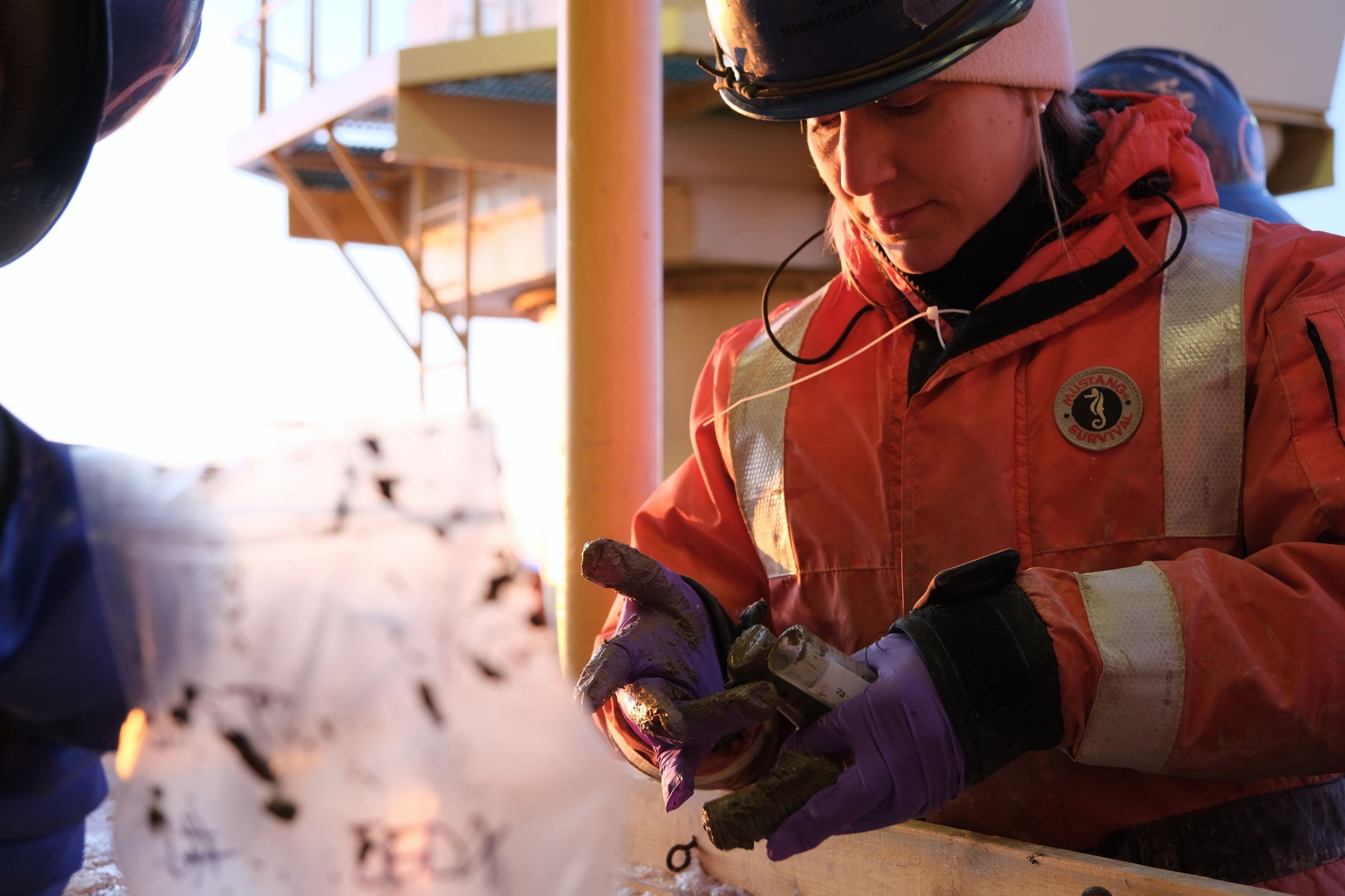Lab Intros + Goodbyes
We are done with science and out of the ice- just like that, we’re out of time. The lab in the belly of the ship was 5 degrees warmer today. The cooks seem to be giving us all the desserts they have left onboard. I’ll message you again tomorrow, so this isn’t goodbye. Today I want to tell you how well things have gone for our scientists:
Holly’s lab has never been to Antarctica before! They put down tubes to grab cylinders of mud from the seafloor, then they sift nematodes (microscopic worms) out of the mud. The samples they got here will hopefully establish an entirely new branch of Holly’s research program. She says they definitely found new species, and one of them has a totally different body plan than any nematode she’s seen before. You can get to Holly’s social channels and results announcements at https://www.hollybik.com
Kevin Kocot’s team used a sled to very gently collect tiny, delicate organisms. They found so many that Kevin says he’ll need to hire more people just to finish processing all their samples. His team also found the “holy grail” of the species were looking for (this picture is them telling him about it as he's coming on-shift), and they’ve documented species with unexpected behaviors and reproduction strategies. Kevin writes fun blog posts on https://IcyInverts.com/
Sarah Gerken’s team combed through organisms from the same sled runs as Kevin, but looking for different species. They found more critters in the first 3 science days here than they found during their entire previous expedition, in 2020. Beautiful photos of their study organisms are on Instagram at @crustacea.cumacea
Andy Mahon and Ken Halanych combined teams to sort through the bigger stuff hanging out on the seafloor, which they brought up with a trawl net. They’ve both been to Antarctica many times but of course never studied in this area, so they were telling me excitedly about how different their results are from this side of the continent compared to what they usually see. They want to know how connected (or not) the groups of animals are that live in different areas of Antarctica. Different, say their results, but they also found very different animals from site to site over here. They also post about their work through https://IcyInverts.com/
Derek Learman and Drew Steen’s team used the same mud cylinder gatherer that Holly’s lab did (this vid shows my favorite core ever to come up, which happened to bring up a swimming sea cucumber). They sliced the mud into thin layers to see what the deal is with how food and nutrients move through each layer, which tells them about how the whole ecosystem works at each different site. They’re comparing sites around Antarctica, and this expedition lets them say something about how the ocean works all around the continent. They talk about their work at https://adsteen.github.io/
Since I’ll be saying goodbye tomorrow, make sure you send me questions or requests for pictures in the next 24 hours! And I would love to know more about you and give you personal sendoffs. Anyone who messages or emails me the answers to 2 questions (How did you hear about this group? Was it just you reading the messages or did you share these updates with other people?), I will send you a picture of me on the ship with a sign that says “Hello from Antarctica!” or anything you want (hi and your name, a cartoon drawing of a penguin- I’ll do anything PG-13 and not mean).
Your questions:
- “What is the depth/temperature of the seabed?” Most of our sites have been around 400 m (1,300 ft) deep and -1 C (31 F). It’s a little colder than freezing but still not frozen for the same reason that salt sprinkled on the sidewalk works: salty water freezes at a lower temperature.
- “I’ve heard of large glaciers in West Antarctica but not in Eastern Antarctica [where our expedition is]. Why?” They’re definitely here! We think they don’t get nearly as much press because not nearly as many people study East Antarctica.
⏳ Virginia


